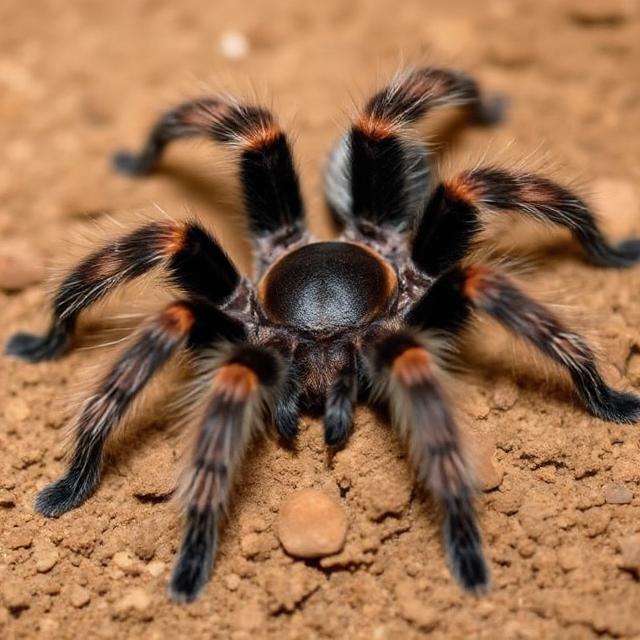How to care for a pet tarantula
How to Care for a Pet Tarantula: A Complete Beginner’s Guide
How to care for a pet tarantula. Keeping a tarantula as a pet may sound intimidating at first, but these fascinating arachnids can make surprisingly low-maintenance companions when cared for properly. Whether you are captivated by their exotic appearance or intrigued by their mysterious nature, understanding their unique needs is the first step toward creating a safe and healthy environment. This detailed guide will walk you through how to care for a pet tarantula—from selecting the right species to feeding, handling, and maintaining their habitat.
Why Choose a Tarantula as a Pet?
Tarantulas are increasingly becoming popular pets among exotic animal lovers due to their low upkeep and unique behavior. Here are a few reasons why they make great pets for beginners: How to care for a pet tarantula
-
Low Maintenance: They don’t require daily walks, constant attention, or expensive vet visits.
-
Quiet and Odorless: Unlike many other pets, they are silent and produce very little odor.
-
Fascinating to Observe: Their molting, hunting, and web-spinning behaviors are intriguing.
-
Space Efficient: They require only a small enclosure compared to other exotic pets.
Choosing the Right Tarantula Species
Not all tarantula species are suitable for beginners. Some are docile and easy to handle, while others can be more aggressive or fast-moving. Popular beginner-friendly species include:
-
Chilean Rose (Grammostola rosea): Known for its calm nature and hardiness.
-
Mexican Red Knee (Brachypelma smithi): Vibrant and docile, perfect for observation.
-
Curly Hair Tarantula (Tliltocatl albopilosus): Easy to care for and tolerant of handling.
Before making your decision, research the species’ temperament, lifespan, and care requirements.
Setting Up the Perfect Habitat
How to care for a pet tarantula. A proper enclosure is crucial for the health and comfort of your tarantula. Here’s what you need to consider:
1. Tank Size
Tarantulas do not require large tanks. A 5–10 gallon terrarium is usually sufficient. The width should be about three times the spider’s leg span, with enough height to allow for climbing (especially for arboreal species).
2. Substrate
Coconut fiber, peat moss, or a mix of organic soil works well. Provide at least 2–4 inches of substrate for burrowing species.
3. Temperature and Humidity
Most tarantulas thrive between 70–80°F (21–27°C). Humidity varies by species—desert tarantulas need lower humidity, while tropical species require higher levels (60–80%). Use a thermometer and hygrometer to monitor conditions.
4. Hiding Spots and Decorations
Add hides like cork bark, half logs, or artificial caves. Tarantulas appreciate having a secure hiding place.
5. Lighting
Tarantulas do not require special UV lighting. Normal room lighting is sufficient, but avoid direct sunlight.
Feeding Your Tarantula
Tarantulas are carnivorous and primarily feed on live insects. Common food includes:
-
Crickets
-
Roaches
-
Mealworms
-
Locusts
Feeding Schedule
-
Juveniles: Feed 2–3 times per week.
-
Adults: Once a week is usually enough.
Always remove uneaten prey after 24 hours to prevent stress or injury to your tarantula.
Water
Provide a shallow dish of clean water. Ensure the dish is not too deep to avoid accidental drowning, especially for smaller spiders. How to care for a pet tarantula
Handling and Interaction
How to care for a pet tarantula. Many tarantulas are better admired than handled frequently. Excessive handling can cause stress or injury. If you must handle:
-
Move slowly and gently.
-
Allow the tarantula to walk onto your hand.
-
Sit near the ground to prevent injury if it falls.
Remember, some species may flick urticating hairs as a defense mechanism, which can irritate skin and eyes.
Molting: A Critical Stage in Tarantula Care
Molting is the process where a tarantula sheds its old exoskeleton to grow. This is a vulnerable time for your spider. How to care for a pet tarantula
Signs of Molting
-
Reduced appetite
-
Lethargy
-
Dull coloration
-
Webbing the enclosure floor
How to Care During Molting
-
Avoid feeding live prey during molting.
-
Maintain proper humidity.
-
Do not disturb the tarantula until it fully recovers.
Cleaning and Maintenance
Tarantulas are relatively clean animals, but you still need to maintain their enclosure: How to care for a pet tarantula
-
Remove leftover food and waste regularly.
-
Replace water daily.
-
Change substrate every 4–6 months or as needed.
Health and Common Problems
Tarantulas are hardy, but some common issues include:
-
Dehydration: Signs include shriveled abdomen and lethargy.
-
Mites or Mold: Caused by poor hygiene or excess humidity.
-
Injury from Falls: Tarantulas are fragile; a fall can be fatal.
If you notice unusual behavior, consult an exotic pet veterinarian.
Pros and Cons of Keeping a Tarantula
Pros
-
Low maintenance
-
Quiet and odor-free
-
Fascinating to observe
Cons
-
Not very interactive
-
Some species are aggressive
-
Requires specific care knowledge
Final Thoughts
Learning how to care for a pet tarantula is all about understanding its unique lifestyle and creating a stable, stress-free environment. With proper housing, feeding, and minimal handling, tarantulas can thrive for years—even decades. They are perfect for individuals who prefer a low-maintenance but captivating pet.
If you’re a beginner, start with a hardy species like the Chilean Rose or Curly Hair tarantula, and gradually gain confidence. Remember, patience and respect for their solitary nature are key to a successful tarantula-keeping experience. How to care for a pet tarantula


